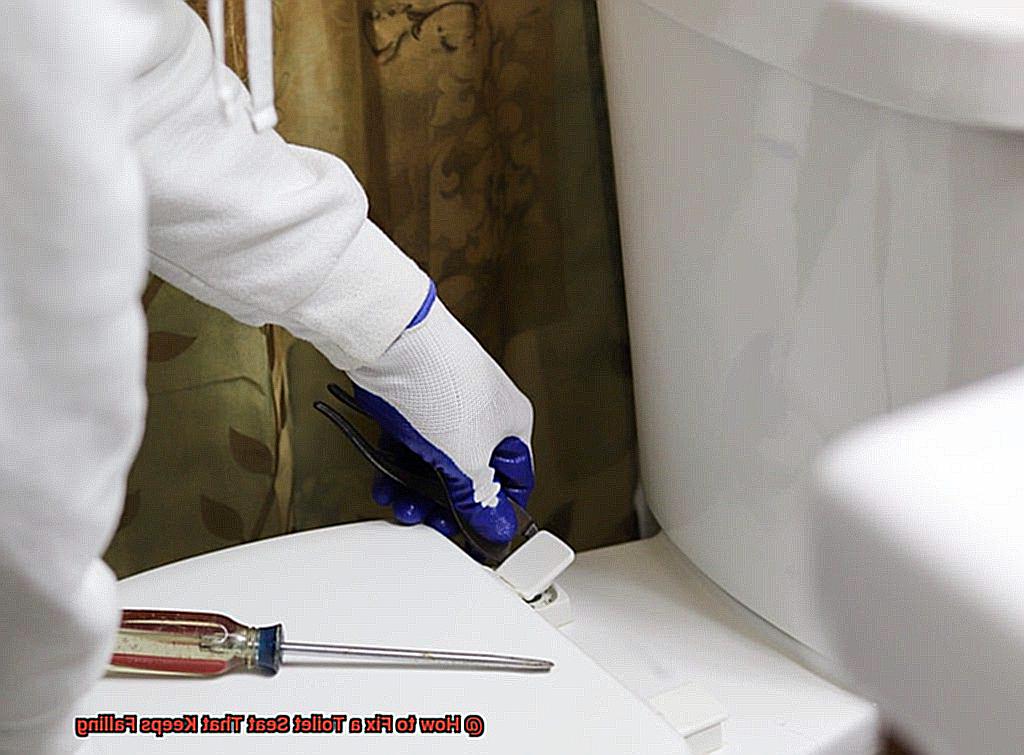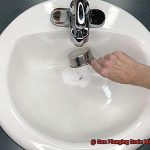Are you tired of constantly tightening your toilet seat every time it decides to take a sudden dip while you’re in the middle of using it? Do you feel like you’re on a never-ending battle to keep your toilet seat in place?
Well, fear not. Fixing a toilet seat that keeps falling is not as daunting as it may seem. With the right tools and a little bit of know-how, you can have your throne back in tip-top shape in no time.
In this blog post, we’ll guide you through the steps needed to fix a wobbly toilet seat. From understanding the different types of toilet seats and their fixing mechanisms to troubleshooting tips and tricks, we’ve got everything covered.
Whether your toilet seat is attached with screws, nuts and bolts or has a quick-release mechanism, we’ve got all the information you need. Say goodbye to calling plumbers for such a simple problem.
So don’t wait any longer. Sit tight and read on to learn how to fix a toilet seat that keeps falling. It’s time to regain control of your bathroom once and for all.
Contents
What Causes a Loose Toilet Seat?
A loose toilet seat can be frustrating and even dangerous, especially for those with mobility issues. But fear not, we’ve got you covered. In this article, we’ll dive into what causes a loose toilet seat and offer some solutions to fix the problem.
One of the most common causes of a loose toilet seat is wear and tear. Over time, the hinges that hold the seat in place can become damaged or loose, causing the seat to wobble or even detach. This can be a result of constant use, incorrect installation or natural wear and tear.
Another factor that contributes to a loose toilet seat is incorrect installation. If the bolts holding the seat in place are not tightened correctly during installation, they may come loose over time, causing discomfort and inconvenience. To avoid this issue, it is essential to ensure that the bolts are tightened correctly during installation.
Additionally, constant use of the toilet seat can also cause it to become loose over time. The constant opening and closing of the seat can cause wear and tear on the hinges, leading to a wobbly or unstable seat. This is especially true in households with large families or high-traffic bathrooms.
Understanding what causes a loose toilet seat is crucial to fixing the problem effectively. By identifying the root cause of the issue, you can take corrective action and ensure that your bathroom remains safe and functional. Solutions may include tightening bolts with a screwdriver or an adjustable wrench, replacing worn-out hinges with new ones using pliers and a screwdriver or even replacing the entire toilet bowl if it’s cracked or damaged.
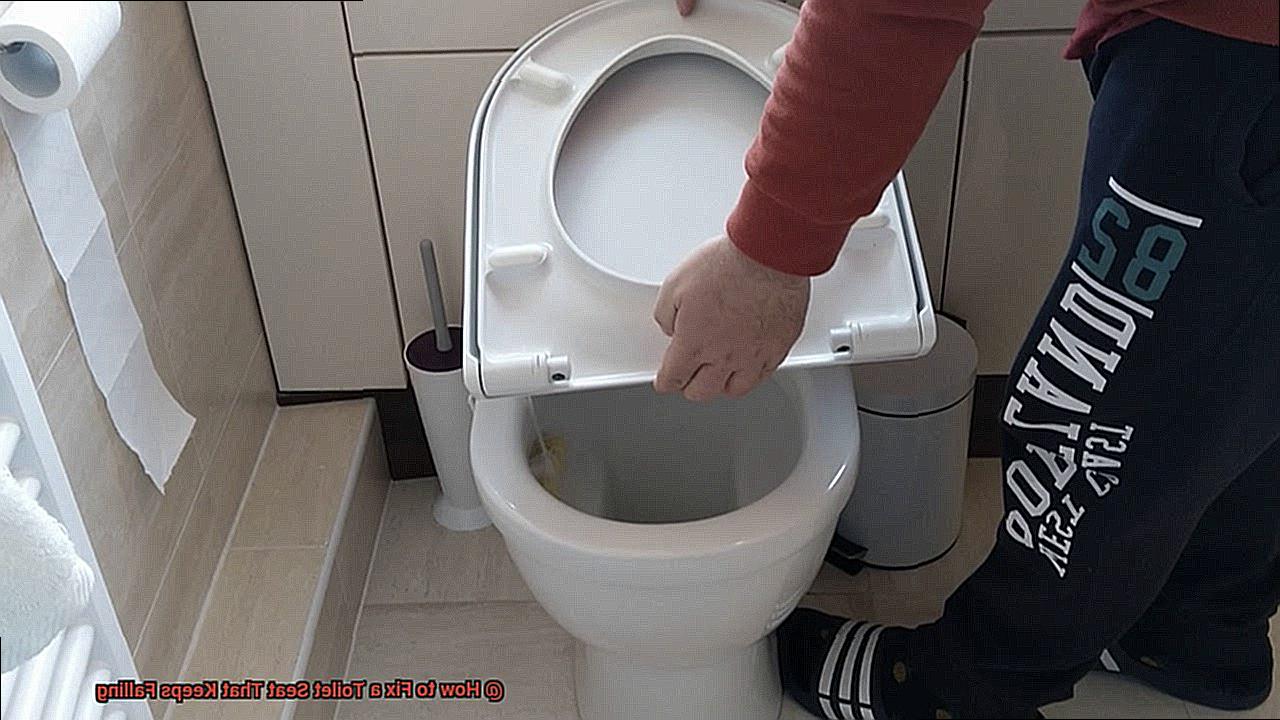
How to Tighten the Bolts or Screws
There’s nothing more frustrating than a wobbly toilet seat that keeps sliding off every time you sit down. But don’t worry, there’s an easy fix for this common problem.
All you need to do is tighten the bolts or screws of your toilet seat. In this guide, we’ll walk you through five simple steps to help you secure your wobbly toilet seat.
Locate the Bolts or Screws
The first step in securing your toilet seat is to locate the bolts or screws that attach the seat to the toilet bowl. These are usually located at the back of the seat where it hinges on the bowl. You may need to remove small plastic caps to access them.
Use the Right Tools
Once you’ve located the bolts or screws, you’ll need a wrench, pliers, or screwdriver to tighten them. Using these tools gently, turn the bolts or screws clockwise until they are snug.
Avoid Over-tightening
It’s important not to over-tighten the bolts or screws. Doing so can cause damage to the seat or bowl. Tighten them just enough to prevent the seat from wobbling or sliding around. Remember to tighten both bolts evenly so that the seat is balanced and secure.
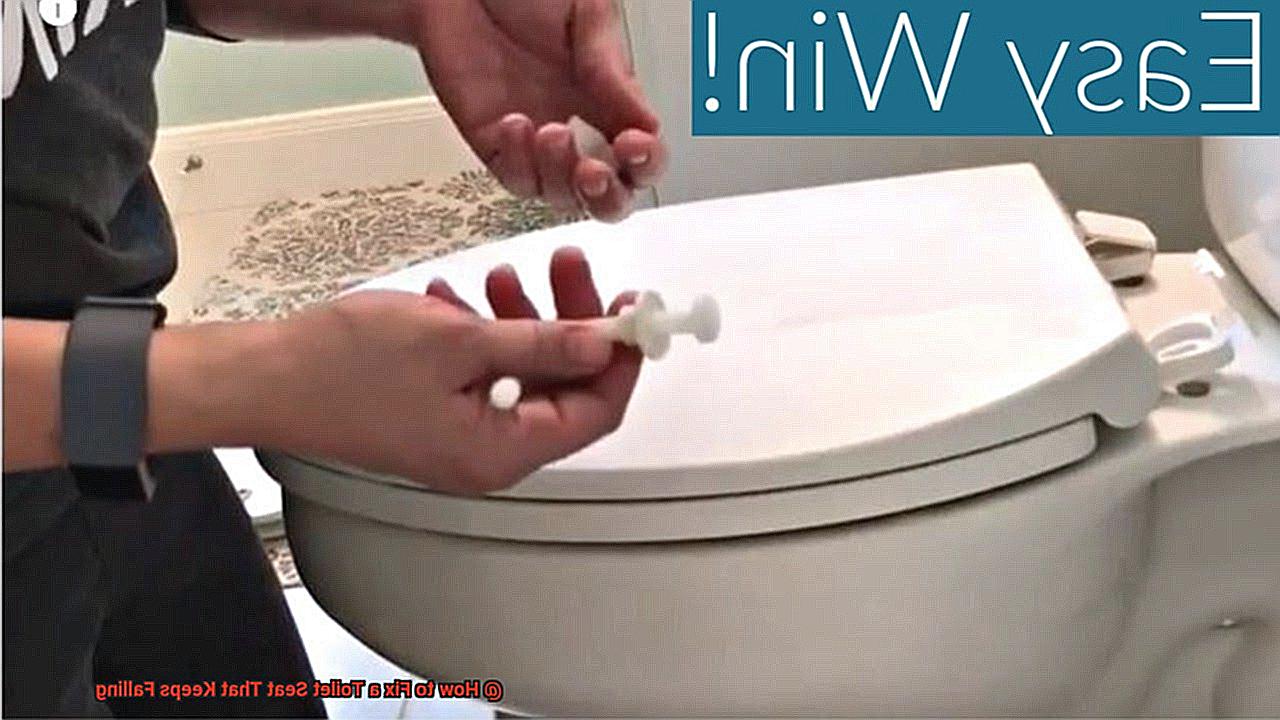
Replace Damaged Bolts or Screws
If you find that the bolts or screws are stripped or damaged, it’s best to replace them before tightening. You can easily purchase replacement bolts or screws from a hardware store or online. Make sure to follow the manufacturer’s instructions for installation carefully.
Regular Maintenance
To prevent future mishaps, it’s crucial to check and tighten the bolts or screws periodically. This will ensure that your toilet remains safe and functional for use.
In conclusion, fixing a wobbly toilet seat is simple and straightforward. By following these easy steps, you can secure your toilet seat in no time. Remember to use the right tools, avoid over-tightening, and regularly inspect the bolts or screws to avoid any accidents.
Replacing the Bolts and Washers
It’s not only annoying but can also be quite embarrassing. However, don’t worry, replacing the bolts and washers is a simple solution. By following these easy steps, you can secure your toilet seat and prevent it from falling off again.
To replace the bolts and washers on a toilet seat that keeps falling, you’ll need a few tools such as pliers, a screwdriver, and a wrench. Here’s how to do it:
Begin by turning off the water supply to the toilet by shutting off the valve located behind it. This will prevent any water from spilling out during the process.
Next, use a screwdriver to remove the caps covering the bolts at the back of the toilet seat. These caps are usually located on top of the seat and can be easily removed by prying them off with a flathead screwdriver.
Use pliers to grip the nuts holding the bolts in place and loosen them until they are completely removed. Remember to keep track of any washers that come off with the nuts.
Now that you have removed the old bolts and washers, it’s time to replace them with new ones. First, place a washer over each bolt before inserting them through the holes on the back of the toilet seat. Then, place another washer over each bolt on the underside of the toilet bowl before securing them with new nuts.
Tighten the nuts using a wrench until they are snug but not overly tight. Over-tightening can cause damage to your toilet bowl or seat.
Finally, replace the caps over the bolts and turn on the water supply. Test out your newly fixed toilet seat by giving it a gentle tug to ensure it is secure.
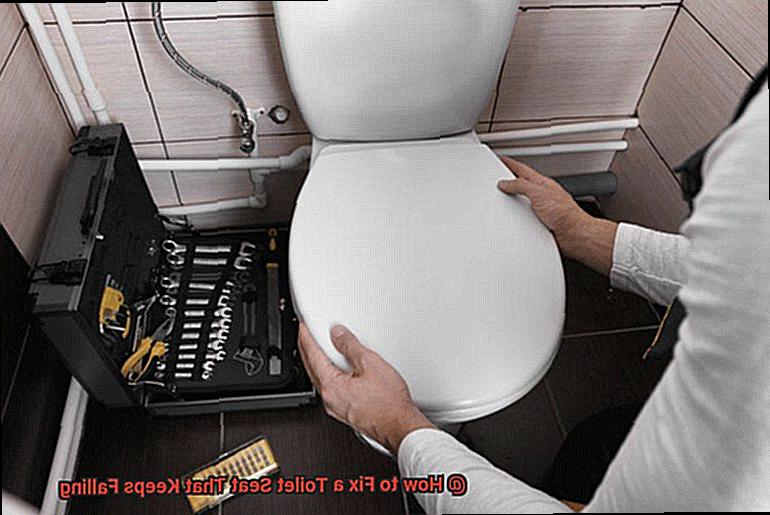
Replacing the bolts and washers is an inexpensive fix for a wobbly toilet seat that keeps falling. Remember to regularly check and maintain all parts of your toilet to ensure it continues to function properly.
Replacing the Hinges
The solution might be simpler than you think: replacing the hinges. Over time, hinges can become worn out or loose, causing your toilet seat to wobble or even fall off. But don’t fret. With just a few basic tools and some simple steps, you can have your toilet seat back to its sturdy state in no time.
First things first – head to your local hardware store and pick up replacement hinges that are compatible with your toilet seat. These hinges are affordable and easy to find, so you’ll be back home in no time ready to get started.
When you’re ready, flip up the toilet seat and locate the screws that hold the hinges in place. Carefully remove these screws with a screwdriver, being sure not to strip them in the process. Once the screws are out, you can lift the old hinges off of the toilet bowl.
Now it’s time to attach your new hinges. Place them in position on the toilet bowl and align them with the holes where the screws will go. Then, use your screwdriver to secure them in place by tightening the screws. Just remember not to overtighten them – this could cause damage to the toilet bowl.
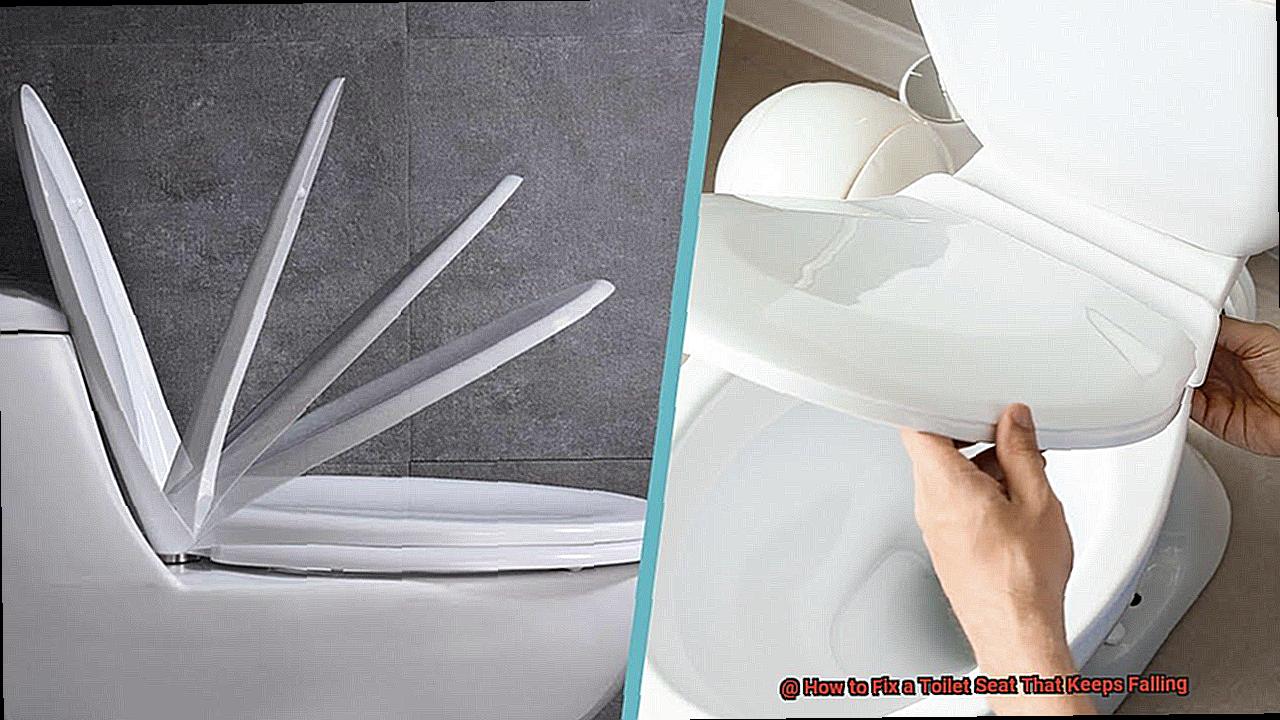
With your new hinges securely in place, it’s time to reattach the toilet seat. Gently line it up with the hinges and slide it back into place until it snaps into position. Finally, give it a test run by sitting on it and checking for any wobbling or movement. If everything feels secure, then congratulations. You’ve successfully replaced your hinges.
Don’t let a wobbly toilet seat cause you any more frustration. Replacing the hinges is an easy DIY task that anyone can handle. With just a little bit of effort, you can have your toilet seat back to its sturdy state in no time.
Replacing the Toilet Bowl
It’s time to replace it to ensure a stable and secure toilet seat. While it may sound like a daunting task, replacing a toilet bowl is not as complicated as it seems.
To begin, shut off the water supply to the toilet and flush it to empty the tank and bowl. Then, use a wrench or pliers to remove the mounting bolts that hold the toilet bowl in place. Carefully lift the toilet straight up and set it aside.
Inspect the flange on the floor for debris or old wax, and ensure it is not damaged. If there is any damage, replace the flange before installing the new toilet bowl.
Now comes the fun part. Place a new wax ring on top of the flange and carefully lower the new toilet bowl onto the ring. Make sure that it is centered over the flange and press down firmly to seal the wax ring.
Replace the mounting bolts and tighten them evenly until they are snug but not too tight. Finally, reconnect the water supply and test the toilet for leaks.
It’s important to note that replacing a toilet bowl can be a challenging and time-consuming task, particularly for those who are not experienced in plumbing. In such cases, consider hiring a professional plumber to ensure that your new toilet bowl is installed correctly and securely.
Say goodbye to that wobbly toilet bowl once and for all by following these simple steps to replace your toilet bowl.
DIY Tips for Fixing a Loose Toilet Seat
Don’t fret, fixing it is easier than you might think. With these five DIY tips, you can say goodbye to the annoyance and discomfort of a loose toilet seat.
Tighten the bolts
Loose bolts or screws are often the culprit behind a wobbly toilet seat. The solution is simple – use a screwdriver or pliers to tighten them up. Just be careful not to overtighten, as it can damage the toilet bowl or seat.
Check for stripped holes
If tightening the bolts doesn’t work, check for stripped holes in the bowl or seat. This occurs when the threads in the holes have worn down, preventing the bolts from staying in place. No worries, though – remove the bolts and use pliers to gently bend the metal tabs on the underside of the seat so that they grip the bowl more tightly.
Tip #3: Use rubber bushings or washers
Rubber bushings or washers can create more friction and prevent slipping between the seat and bowl. These can be found at most hardware stores and are easy to install by placing them between the bolts and seat before tightening.
Replace worn-out bumpers
Brittle and cracked bumpers can cause a toilet seat to wobble. It’s time to replace them with new ones if this is your issue. Simply remove the old ones and secure the new bumpers in place.
Replace the entire toilet seat
If all else fails, it may be best to replace the entire toilet seat. Although it may seem overwhelming, replacing a toilet seat is a simple task that requires only basic tools. Ensure that you purchase a replacement seat that is compatible with your toilet model and follow the manufacturer’s instructions for installation.
hv6XfJofl2A” >
Conclusion
In conclusion, a wobbly or unstable toilet seat can cause more than just frustration. It can be a safety hazard and even lead to injuries. But fear not, fixing it is easier than you think. There are several DIY solutions that require basic tools and some elbow grease.
By understanding the different types of toilet seats and their fixing mechanisms, you can identify the root cause of the issue. Whether it’s loose bolts or hinges or wear and tear over time, there’s always a solution. Tightening screws, replacing washers or even swapping out the entire toilet bowl are all viable options.
Don’t let a loose toilet seat throw off your bathroom game any longer. With regular maintenance and troubleshooting tips like using rubber bushings or washers to prevent slipping between the seat and bowl, you’ll be back in business in no time.
So take charge of your throne and make sure your toilet remains safe and functional for use.

